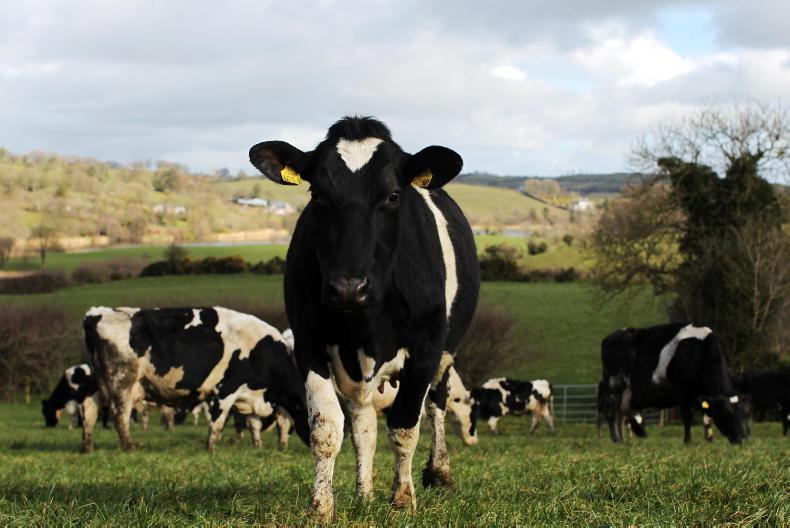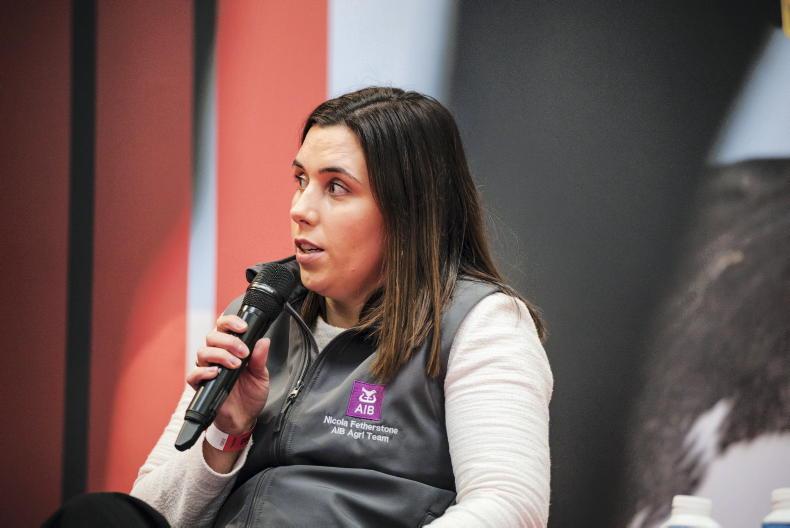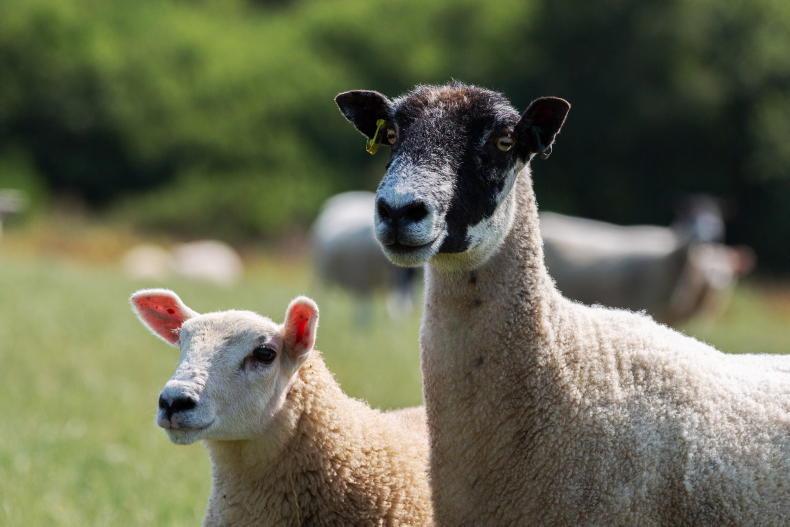Taking time out to plan ahead has been one of the key challenges that has been set for Dairylink Ireland farmers at the start of 2019. Participants in phase two of the programme have been visiting other project farms, with the primary objective of identifying key focus areas for the months ahead.
Lowering production costs on farm and managing time more effectively are common themes arising from the Dairylink group during these farm walks.
Production costs
Total farm production costs across the phase two group are high, especially when we include capital expenditure on farms throughout 2018, which has mostly been funded from cash surplus from the businesses.
Dairy farmers should never underestimate the value of having fellow milk producers looking at your business in a constructive way. Consideration of their opinions and suggestions is an excellent way to formulate a plan for the year ahead. While not all suggestions will work, the point is to have an open mind to change. If we continue to do the same things, then nothing will change.
Resilience
Dairylink Ireland is a holistic farm programme which looks at all aspects of the farm business and attempts to get the best mix of these resources to deliver improved financial performance for each farm and ensure that the business is more resilient moving forward.
The idea of getting the Dairylink group together on each farm is to focus attention on areas within each farm to deliver improvement.
All the project farms have now built a cash plan for 2019, which has been based on 2018 cashflow performance. This involved setting total cash income against total cash expenditure for the 12-month period, which should be very reflective in the farm business current account bank balance. As a starting point, programme farmers were asked the question how has the current account balance changed over the past 12 months.
Reducing production costs with grazing
Planning is key for early spring grazing. Some project farms have planned for difficult grazing conditions and got geared up to use simple tools such as back-fencing, grazing for just a few hours per day and being selective on which paddock to graze to help them through.
Using these tools will allow feed costs to be reduced. All these tools were discussed on a recent farm walk at Richard Marshall’s farm near Omagh.
An important factor with early grazing is to ensure that cows have an appetite built up before turn-out. This could mean holding cows after morning milking for an hour without access to silage.
Previous analysis of spring grass shows grass D-value to be 82%, crude protein content of 22% and metabolisable energy of 12MJ/kg DM.
Spring grass is an excellent feed, as it is high in protein, very digestible and has a high energy content.
For a previous Dairylink farm, feed cost measures highlighted a significant saving with getting cows to grazing. Total feed costs for cows outdoors were at £1.26/cow.
This includes the cost of growing grass and concentrate feeding at 3kg/cow/day.
The alternative of cows inside eating silage and concentrates at 5kg/cow/day had a feed cost of £2.44/cow. This means for a 100-cow herd, feed costs can be reduced by £118/day by getting cows out to spring grass.
Setting spring grazing targets
Although ground conditions deteriorated on farms over the past two weeks, drier weather this week is allowing spring plans to get back on track.
A series of targets have been set to help Dairylink Ireland participants get the most from early spring grazing and to set up milking platforms for the rest of the grazing season.
Measure grass covers in all paddocks across the milking platform to establish average farm cover. The target (pre-grazing) cover on most Dairylink farms is 1,000kg DM/ha.Spread urea-based fertiliser on the grazing block at a rate of 30 units/acre.Spread slurry on lower cover paddocks at a rate of 2,000 gallons/acre.Get late-lactation and positive scanned in-calf cows out to grass as soon as ground conditions allow.Build appetite in cows selected for grazing before letting them out to grass each day.Graze 15% to 20% of milking platform by 1 March. Only graze for three to four hours per day to limit ground damage in paddocks.Paddocks with good lane access and entry points are most suitable for grazing at the beginning of the season.Weekly round-up
Ground conditions have improved on Dairylink Ireland farms this week.Slurry has been spread on ground with low grass covers.The aim is to get urea on the grazing block this week at a half bag per acre.Cows that are in late lactation and scanned in-calf are being selected for early grazing.Phase two Dairylink participants have started visiting each other’s farms as part of a discussion group. Read more
Dariylink: keeping heifers on track in Co Derry
Watch: getting ready for spring in Monaghan
Taking time out to plan ahead has been one of the key challenges that has been set for Dairylink Ireland farmers at the start of 2019. Participants in phase two of the programme have been visiting other project farms, with the primary objective of identifying key focus areas for the months ahead.
Lowering production costs on farm and managing time more effectively are common themes arising from the Dairylink group during these farm walks.
Production costs
Total farm production costs across the phase two group are high, especially when we include capital expenditure on farms throughout 2018, which has mostly been funded from cash surplus from the businesses.
Dairy farmers should never underestimate the value of having fellow milk producers looking at your business in a constructive way. Consideration of their opinions and suggestions is an excellent way to formulate a plan for the year ahead. While not all suggestions will work, the point is to have an open mind to change. If we continue to do the same things, then nothing will change.
Resilience
Dairylink Ireland is a holistic farm programme which looks at all aspects of the farm business and attempts to get the best mix of these resources to deliver improved financial performance for each farm and ensure that the business is more resilient moving forward.
The idea of getting the Dairylink group together on each farm is to focus attention on areas within each farm to deliver improvement.
All the project farms have now built a cash plan for 2019, which has been based on 2018 cashflow performance. This involved setting total cash income against total cash expenditure for the 12-month period, which should be very reflective in the farm business current account bank balance. As a starting point, programme farmers were asked the question how has the current account balance changed over the past 12 months.
Reducing production costs with grazing
Planning is key for early spring grazing. Some project farms have planned for difficult grazing conditions and got geared up to use simple tools such as back-fencing, grazing for just a few hours per day and being selective on which paddock to graze to help them through.
Using these tools will allow feed costs to be reduced. All these tools were discussed on a recent farm walk at Richard Marshall’s farm near Omagh.
An important factor with early grazing is to ensure that cows have an appetite built up before turn-out. This could mean holding cows after morning milking for an hour without access to silage.
Previous analysis of spring grass shows grass D-value to be 82%, crude protein content of 22% and metabolisable energy of 12MJ/kg DM.
Spring grass is an excellent feed, as it is high in protein, very digestible and has a high energy content.
For a previous Dairylink farm, feed cost measures highlighted a significant saving with getting cows to grazing. Total feed costs for cows outdoors were at £1.26/cow.
This includes the cost of growing grass and concentrate feeding at 3kg/cow/day.
The alternative of cows inside eating silage and concentrates at 5kg/cow/day had a feed cost of £2.44/cow. This means for a 100-cow herd, feed costs can be reduced by £118/day by getting cows out to spring grass.
Setting spring grazing targets
Although ground conditions deteriorated on farms over the past two weeks, drier weather this week is allowing spring plans to get back on track.
A series of targets have been set to help Dairylink Ireland participants get the most from early spring grazing and to set up milking platforms for the rest of the grazing season.
Measure grass covers in all paddocks across the milking platform to establish average farm cover. The target (pre-grazing) cover on most Dairylink farms is 1,000kg DM/ha.Spread urea-based fertiliser on the grazing block at a rate of 30 units/acre.Spread slurry on lower cover paddocks at a rate of 2,000 gallons/acre.Get late-lactation and positive scanned in-calf cows out to grass as soon as ground conditions allow.Build appetite in cows selected for grazing before letting them out to grass each day.Graze 15% to 20% of milking platform by 1 March. Only graze for three to four hours per day to limit ground damage in paddocks.Paddocks with good lane access and entry points are most suitable for grazing at the beginning of the season.Weekly round-up
Ground conditions have improved on Dairylink Ireland farms this week.Slurry has been spread on ground with low grass covers.The aim is to get urea on the grazing block this week at a half bag per acre.Cows that are in late lactation and scanned in-calf are being selected for early grazing.Phase two Dairylink participants have started visiting each other’s farms as part of a discussion group. Read more
Dariylink: keeping heifers on track in Co Derry
Watch: getting ready for spring in Monaghan









SHARING OPTIONS